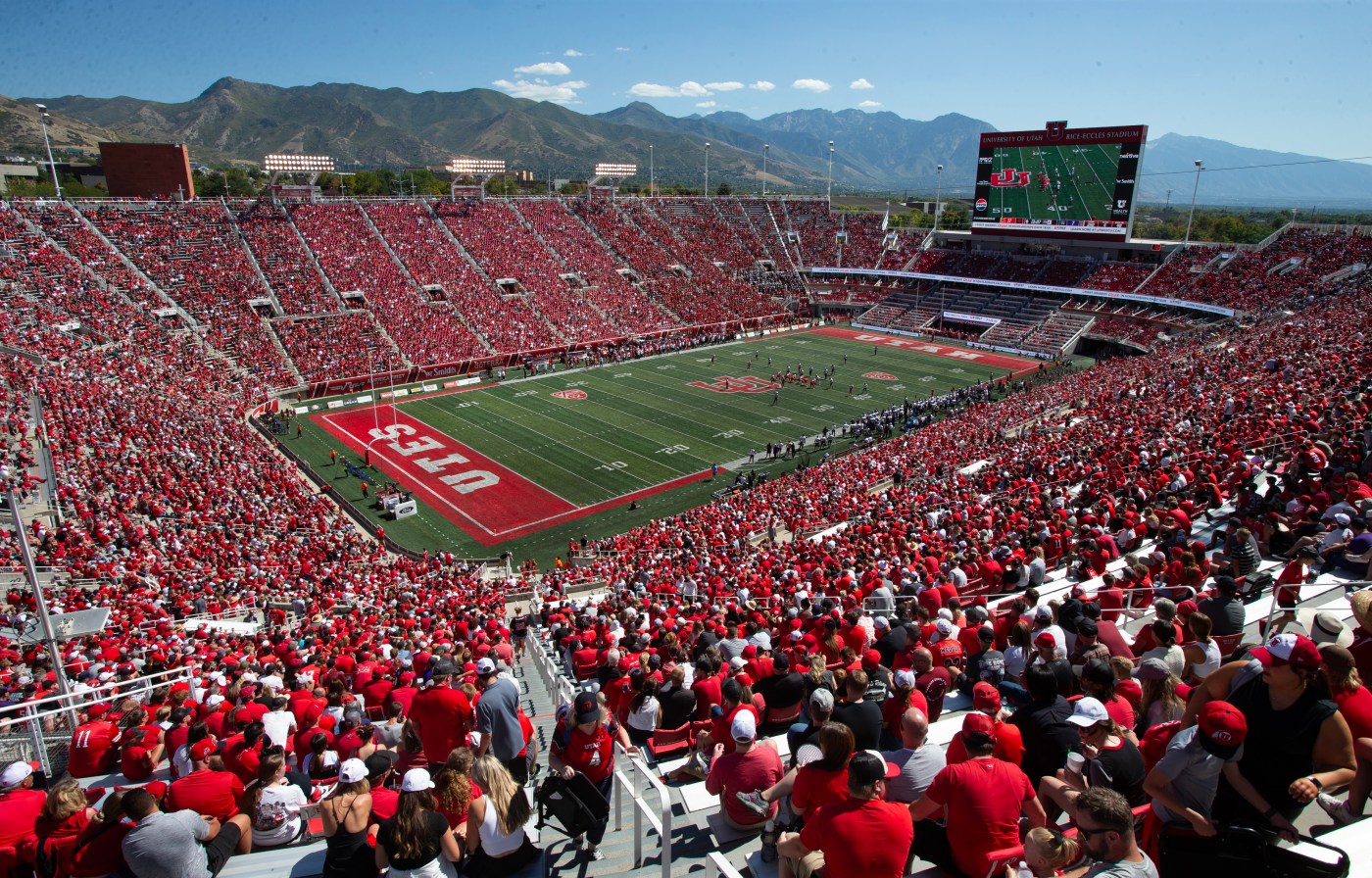What might prove to be Utah’s biggest game of the season is also, in many regards, its first game of the season.
Little of what has transpired over the past three weeks is applicable to the Saturday morning showdown with Texas Tech — a duel that matches two of the Big 12’s three ranked teams and the betting favorites for the conference title.
The best example of innate irrelevance: Utah’s season-opening blowout of UCLA, a 33-point victory in the Rose Bowl, sparkled at the time but has lost considerable luster with the Bruins’ implosions against UNLV and New Mexico.
The Utes only beat the Bruins by eight more points than New Mexico. UCLA might as well have been UTSA — the result tells us nothing about Utah’s hidden vulnerabilities that can only be exposed by an opponent of comparable talent and execution.
The subsequent wins over Cal Poly and Wyoming don’t offer much context, either — except for a few nitpicks with Utah’s offense (which we’ll address momentarily).
But any attempt to decode the Big Noon duel is equally vexing on Texas Tech’s side, for the Red Raiders have played a less rigorous schedule than Utah. They smashed Arkansas-Pine Bluff and Kent State, then blasted Oregon State, which, like UCLA, has collapsed.
Put another way: Utah and Texas Tech have played six games, all against inferior competition, and recorded six blowouts.
Texas Tech’s average victory margin: 46.3 points.
Utah’s average victory margin: 37.4 points.
What should we make of the breakfast date in Rice-Eccles Stadium?
The oddsmakers are similarly perplexed. Utah is favored by three points, which is effectively the edge given for home-field advantage. Were the game played on a neutral field, the matchup would be considered dead even.
Is that giving Utah too little credit for the changes made on offense?
Are the Red Raiders, who reportedly spent more than $25 million on their roster in NIL payments, markedly more talented than Utah?
We suggest a morsel of skepticism before assuming the game is a preview of the Big 12 championship, or even a matchup of two title contenders.
One year ago this week, the 12th-ranked Utes faced No. 14 Oklahoma State in the hotly anticipated conference opener for both teams — it was on Fox, as well — that Utah won by three points.
The Utes didn’t win another Big 12 game until the season finale. The Cowboys? They didn’t win any. The perceived frontrunners ended up as cellar dwellers, and a similar fate could swallow the Utes and Red Raiders this fall.
But for now, we’ll assume they are in the conference race for the long haul and attempt to assess the matchup despite the absence of material results.
The aspect that intrigues us most: chunk plays.
We have no doubt Utah quarterback Dampier will gain yards with his legs and complete the expected number of short- and medium-range passes.
But Dampier must stand in the pocket and connect with receivers downfield. The Utes cannot expect to repeatedly produce 10- or 12-play scoring drives. Too many things can go wrong when the ball advances in four-yard increments.
They must generate big plays in the passing game — plays of 20, 30 and even 40 yards.
Which means Dampier must deliver the ball from the pocket into tight windows with high-level velocity, touch and timing. Is he capable?
That aspect of Utah’s aerial game was largely absent last week in the victory at Wyoming, when Dampier completed just two passes of 20 yards or more.
Related Articles
Bowl projections: Oregon to CFP, USC to Alamo, Utah drops to Las Vegas
Big 12 power rankings Week 4: Iowa State, Utah, Texas Tech on top
Big 12 social media takes on Saban, Sankey and Petitti in crafted strategy
Holy Score: Projecting Utah’s results in the Big 12, game by game
The SEC goes to 9: Major implications for future CFP format, Big 12 teams
For the season, he is averaging 7.1 yards per attempt, which is 77th nationally and 12th in the Big 12.
The Utes have just 14 plays of 20 yards or more, which ranks 12th in the Big 12.
They have only five plays of 30 yards or more, which ranks 13th.
Granted, those numbers are largely rooted in style of play. The Utes aren’t an Air Raid team and don’t need to be an Air Raid team. They are built to bludgeon with Dampier’s running skills, their talented tailbacks and the elite offensive tackle tandem of Spencer Fano and Caleb Lomu.
But the Utes cannot be ground-and-pound at the exclusion of the downfield passing game, as they were so often, it seemed, back in the 2010s.
That’s the case this week and will be the case every week.
If the Utes hope to win the Big 12 — to potentially send coach Kyle Whittingham into retirement with a trophy in hand — then Dampier’s impact cannot be limited to quarterback runs and high-percentage passes.
Utah must stretch the field and gain chunk yards, and the process starts against Texas Tech.
Unlike the first three games, which revealed little about what’s to come from the Utes, the showdown Saturday will tell us everything.
*** Send suggestions, comments and tips (confidentiality guaranteed) to [email protected] or call 408-920-5716
*** Follow me on the social media platform X: @WilnerHotline





